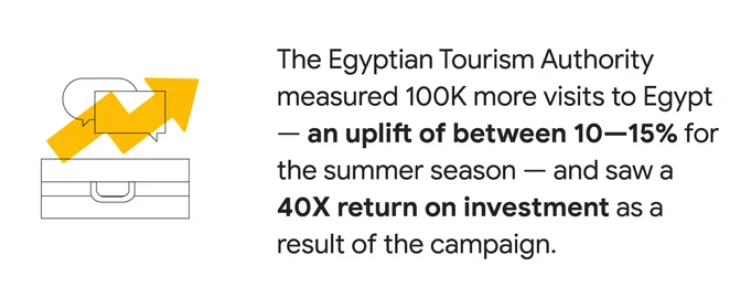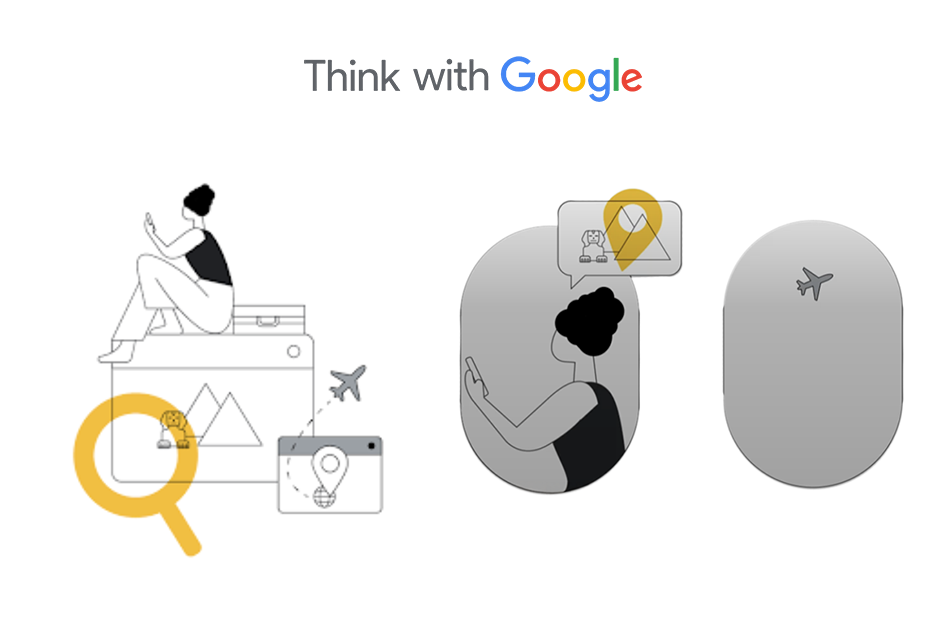One of the biggest challenges travel marketers face today is measuring the real impact of their ad campaigns. That’s because most travellers book their holidays independently or through online travel agents.
At the Egyptian Tourism Authority (ETA), we wanted to gain a clearer understanding of how many visitors actually arrived in Egypt as a result of our marketing campaigns.
We’ve traditionally focused on offline advertising — think TV, print, and out-of-home advertising — to promote Egypt as a destination. However, we realised that in today’s complex marketing landscape, AI-powered digital campaigns could offer a valuable advantage.
We partnered with Google and data transformation agency Artefact to develop an AI-powered, end-to-end tool — built using Google AI as the foundation — that would help us achieve three objectives:
Using AI to count visits to Egypt and unlock traveller insights
Artefact based the tailormade tool on Ads Data Hub technology.
“This cloud-based solution uses AI to combine different sets of data — for example event-level data paired with remarketing or — to help marketers make sense of their ad campaign data,” Margot Bletterie, data consulting director at Artefact, explains. “This happens in a way, since the underlying data cannot be inspected as results are aggregated from a group of users.”
Media agency Universal Media ran our campaign in the summer season, between May and June. These warmer months are traditionally quieter for travellers coming to Egypt, allowing us to more effectively assess whether the campaign had any effect on tourism numbers.
Our campaign went live across Google Ads and Display and Video 360, showing an ad to our chosen audiences in key markets.
Let’s say, for example, this long-form ad reached someone in the U.K.:
If that person was logged into Google at the time of viewing the ad, the AI-powered tool could understand that they had seen it.
If they landed in Egypt after seeing the ad, the remarketing campaign would be activated, prompting it to share a different, short-form remarketing ad with them:
Given the remarketing campaign was geo-targeted to Egypt only, this confirmed that when people saw the ad, they were already in the country.
The reason for sharing remarketing ads with people already in Egypt was strategic. These short Bumper ads helped us share additional recommendations with travellers, for example which parts of Egypt to visit and which activities to try. With people already being in Egypt at the time of seeing these ads, they were far more likely to action our suggestions.
Only once someone had seen both ads did the AI-powered tool count a conversion — meaning a visit to Egypt. It also generated a live dashboard that shared useful aggregated campaign insights — like age, gender, lead time to travel, and statistics on visitor’s origin country and city — that our team could use to better understand visitors to Egypt.
These helped us enhance ad creatives and launch campaigns in line with people’s travel plans.
For example, the AI tool revealed that lead time to travel can vary from 23 to 52 days, depending on the market. By sharing suggestions per market on sights people could see in the lead up to their trip, we could help potential visitors firm up travel plans and bookings before they arrived.
The insights also helped us optimise campaign budgets with a focus on markets and types of travellers that are more likely to book a trip to Egypt in the future.
For example, if we saw that the majority of visitors from France were older men, we could adjust our strategy and creative approach for that country to also attract women and younger audiences.
Shifting offline spend to digital to increase conversions
While in the past we had focused on offline advertising, this new digital campaign far exceeded our expectations. We measured 100K more visits to Egypt — an uplift of between 10—15% for the summer season — and saw a 40X return on investment.

The success of this campaign — which featured both long-form and shorter Bumper ads — also prompted a strategic shift in our ad format choices. We’re now actively incorporating short-form ads across our marketing efforts, recognising their effectiveness in engaging audiences.
The results have also given us confidence to shift additional budget to digital media and media consolidation. For example, we replaced some out-of-home advertising — think billboards, wallscapes, and posters — with digital out-of-home ads.
While we found the AI tool’s integration of event-level and remarketing data useful in providing us with insights for this campaign, we have further ambitions. Next, we’d like to integrate first-party data into the tool to uncover broader campaign insights that might help us create more personalised marketing communication.

 BLOG
BLOG




